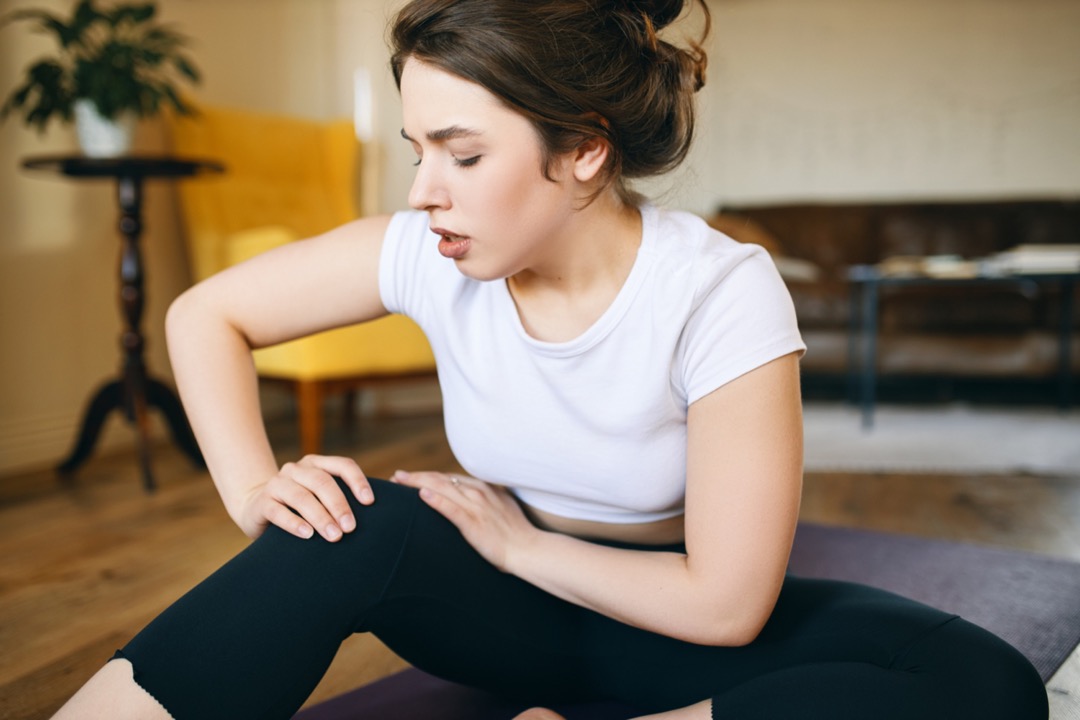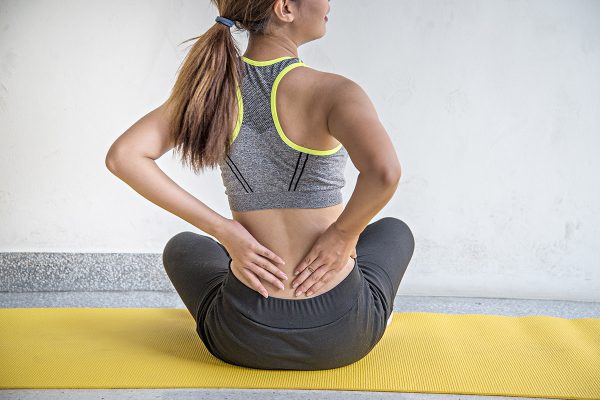As the founder of YogaFit Training Systems I’ve taught hundreds of thousands of people all over the world. As the lead teacher at the Be YogaFit Studio in Lauderdale By The Sea, I see it first hand every day – almost everyone who comes in has some type of injury- If you have lived life – chances are you have or have had some type of injury. Our sunny,welcoming studio by the ocean attracts a diverse crowd—golfers nursing shoulder strains, runners with knee issues,writers battling back pain from too much screen time, and individuals rediscovering movement after years of sedentary living. Injuries are a common thread that brings people through our doors. But here’s the thing: what if I told you that an injury isn’t just a setback? What if it’s an invitation—a profound opportunity for true healing, enhanced mindfulness, lifting (and living) with more intention, and preventing future mishaps by learning to listen to your body like never before? I’ve been working out for over 40 years, sometimes very hard heavy lifting in the gym, I’ve run a few marathons and literally walked miles and miles in numerous cities. I’ve dealt with two knee issues, a hip flexor issue,Achilles tendon tear ( that I did not know about for a month and walked ten miles with one night in Bancock )a reoccurring shoulder injury that started in my late 20’s,I have also broken a wrist on a very aggressive bike ride and threw my back out in Tokyo at a fitness trade show- I initially could not walk but was able to use gentle yoga to heal enough to present and move an d guide 100 people through a yoga class the next day. – I am so thankful for YOGA – Its the ultimate healing tool for both PREVENTING AND HEALING INJURIES

Let’s dive deep into the EVERYTHING IS A GIFT OR LEARNING EXPERIENCE perspective. Those of you grappling with injuries and seeking yoga, strength training, flexibility work, and a hefty dose of mindfulness here are some insights drawn from years of guiding students through their recovery journeys. Let’s also explore how habitual fear patterns in the mind can block healing, and how reframing an injury as a teacher or student can transform your practice and your life.
The Injury Paradox: From Setback to Springboard
Let’s start with the basics. Injuries happen. Whether it’s a car accident, a twisted ankle from a misstep on the beach, a pulled hamstring from overzealous cycling or tennis , or chronic tension in the neck from poor posture, our bodies send signals when something’s off. Society often views injuries as pure negatives—time off the mat, canceled workouts, frustration mounting. But flip the script: an injury is your body’s way of saying, “Hey, pay attention!” It’s a forced pause in a fast-paced world, creating space for reflection and growth. My personal philosophy – If I am injured, I keep moving, doing yoga, modifying as needed, and testing the boundaries of the actual injury.

At Be YogaFit, we emphasize that healing isn’t just about physical repair; it’s holistic. When you’re sidelined, you have a unique chance to rebuild stronger. Research from sports psychology shows that athletes who approach injuries with a growth mindset recover faster and perform better long-term. Think of it like this: without the injury, you might never slow down enough to notice imbalances in your strength, flexibility, or even your mental state. This is where mindfulness enters the picture—training your awareness to tune into subtle cues, turning reactive habits into intentional actions. Basically you can get moremindfullness into your workout routine.
The common barrier I see repeatedly The mind’s habitual fear patterns. After an injury, it’s natural to feel cautious. But unchecked, this caution morphs into fear: “What if I reinjure myself? What if I’m never the same?” These thoughts create a cycle of avoidance, tense muscles, and shallow breathing, which actually delays healing. In yoga philosophy, this is akin to “samskaras”—deep-seated impressions that color our experiences. By addressing them through mindful practices, we peel away these layers (yes, healing often feels like peeling an onion—tears and all), revealing a more resilient self.
Healing Through Presence: The Mindfulness Connection
Mindfulness is the cornerstone of turning an injury into an opportunity. At its core, mindfulness is about being present without judgment. When injured, pain demands your attention, pulling you out of autopilot. This is mindfulness training in action. Instead of pushing through discomfort (a recipe for worsening the issue), you learn to observe it. Where is the pain? Is it sharp or dull? Does it shift with breath or movement?
In our studio classes, we guide students to use breathwork and gentle yoga poses to cultivate this awareness. For instance, a simple child’s pose can become a mindfulness exercise: notice how your injured area feels as you fold forward. Does fear tighten your chest? Acknowledge it, breathe into it. Studies from the Journal of Pain Research indicate that mindfulness-based interventions reduce chronic pain by up to 30% by altering brain pathways associated with fear and stress.
This training extends beyond the mat. Everyday activities become intentional. Walking to the kitchen? Tune into your gait—does your knee favor one side? This heightened body listening prevents future injuries by catching imbalances early. I’ve had students who, post-injury, report feeling “lighter” in their movements. Not just physically lighter from reduced inflammation, but emotionally lighter, free from the weight of unexamined fears.

Consider Sarah, a regular at Be YogaFit. She came in with a rotator cuff tear from years of competitive swimming. Initially, fear kept her rigid; she avoided overhead movements entirely. Through mindfulness sessions, we worked on visualization: imagining fluid, pain-free motion while practicing supported shoulder openers. Over time, her fear patterns dissolved, and healing accelerated. Now, she lifts weights with intention, focusing on form over force, and hasn’t reinjured in two years.
Mindfulness also fosters emotional healing. Injuries can trigger grief—loss of mobility, identity as an “active person.” By sitting with these feelings in meditation, you process them, emerging with greater empathy for yourself. This self-compassion is key; a study in the British Journal of Sports Medicine found that athletes with high self-compassion levels adhere better to rehab protocols, leading to fuller recovery. I like to give the injury SOME ATTENTION – but not too much, I also meditate sending healing energy to the injury and sending light.
Ah, lifting—whether it’s dumbbells, your own body weight in yoga, or groceries from the car. Injuries often stem from mindless lifting: rushing through reps, ignoring form, or overloading without recovery. But post-injury, you get a reset button. This is your chance to lift lighter with more intention, building a foundation that prevents future woes.
“Lighter with more intention” means prioritizing quality over quantity. Start with reduced weights or modified poses to rebuild neural pathways. In strength training at Be YogaFit, we incorporate yoga principles: engage the core, align the spine, breathe steadily. For someone with a lower back injury, this might mean starting with bird-dog poses instead of deadlifts, focusing on stability before strength.
Why does this work? Intention activates proprioception—your body’s sense of position in space. An injury often disrupts this, but mindful retraining sharpens it. A 2023 study in the Journal ofOrthopedic & Sports Physical Therapy showed that intentional, low-load exercises improve muscle activation patterns, reducing reinjury risk by 40%.
Moreover, lifting with intention combats fear. That habitual pattern of bracing against pain? It leads to compensatory movements, like hiking a hip to protect a knee. Mindfulness helps you notice and correct this in real-time. One technique we teach: “body scanning” before each lift. Close your eyes, scan from toes to head, noting tension. Release it with a deep exhale. This not only prevents injury but makes training meditative, turning workouts into mindfulness sessions.
For flexibility, intention is equally vital. Injuries often tighten tissues, but aggressive stretching can exacerbate them. Instead, approach with gentleness—hold poses longer, breathe deeper. In yin yoga classes at our studio, we hold poses for 3-5 minutes, encouraging students to listen: when does resistance turn to release? This builds flexibility mindfully, preventing overstretching.
Take Mike, a construction worker with chronic hip issues from heavy lifting. Fear made him avoid squats altogether. We started light: wall sits with focused breath. Over weeks, intention built confidence; now he lifts heavier loads safely, his body a tuned instrument responding to subtle cues.
The ultimate gift of an injury? Developing the skill of listening to your body—a superpower for lifelong prevention. In our fast world, we ignore whispers until they become screams. An injury amplifies those whispers, training you to heed them.
Listening means discerning signals: fatigue vs. laziness, good pain (muscle burn) vs. bad (sharp twinge). Yoga excels here, with its emphasis on svadhyaya (self-study). In classes, we cue: “Honor your edge—push gently, but retreat if needed.” This builds intuition; over time, you anticipate issues before they arise.
Strength training reinforces this. Progressive overload is great, but without listening, it’s risky. Post-injury, you learn to track recovery: how does that shoulder feel after 10 reps? Adjust accordingly. Flexibility work adds layers—static stretches teach patience, dynamic ones rhythm. ALWAYS START WITH A WARM UP SET – light and easy.
practices like body awareness meditation heighten sensitivity. A Harvard study found mindfulness practitioners detect bodily changes earlier, averting escalation.
Fear patterns sabotage listening; they amplify perceived threats, drowning real signals. Cognitive behavioral techniques, integrated in our mindfulness sessions, reframe: “This sensation is information, not danger.” Peel away fear, and true listening emerges.
At Be YogaFit, we see transformations. A runner with IT band syndrome learned to listen during gentle flows, noticing tightness early. Now, she prevents flares by incorporating pre-run yoga, running stronger than ever.
Integrating Yoga, Strength, Flexibility, and Mindfulness for Injured Bodies
Now, let’s weave these together practically. For injured folks, a balanced approach is key.
Yoga for Healing and Mindfulness: Start restorative—props support, poses like supported bridge ease into movement. Build to vinyasa, syncing breath with flow for intention. Mindfulness: end with savasana, scanning for insights.
Use bodyweight first—planks for core, wall pushes for upper body. Progress to weights, emphasizing form. Intention: visualize muscles engaging, listen for feedback.
Focus on injured areas—gentle hip openers for lower body issues, chest stretches for shoulders. Hold with breath, peeling fear layers.
Journal post-practice: what fears arose? How did you respond? Group discussions at the studio foster community, normalizing the process.
Consistency matters. Aim for 3-5 sessions weekly, mixing modalities. Track progress—not just physical, but mental: less fear, more presence.
Nutrition and rest amplify: anti-inflammatory foods, sleep for repair. Hydration keeps tissues pliable.
To bring this home, let’s share more stories (with names changed for privacy).
Elena, a dancer with ankle sprain, feared ending her career. Through mindfulness yoga, she listened, rebuilding flexibility intentionally. Now, she dances lighter, preventing twists.
Tom, post-knee surgery, avoided strength work from fear. Light, intentional lifts rebuilt trust; mindfulness peeled doubt. He’s playing PickleBall pain-free.
These aren’t anomalies—they’re the norm when viewing injuries as opportunities.
It’s not all smooth. Plateaushappens; fear resurfaces. Solution: patience. If stuck, seek pros—our instructors or PTs.
Motivation dips? Set micro-goals: “Today, listen during one pose.” Celebrate wins.
Cultural pressures push “no pain, no gain”—counter with “smart effort, sustainable gain.”
This mindset ripples outward. Better body listening improves relationships—you tune into others’ cues. Work life: notice stress early, prevent burnout.
Spiritually, it’s empowering: your body as wise ally, not adversary.
Injuries aren’t endpoints; they’re portals to deeper healing, mindfulness, intentional living, and prevention. At Be YogaFit in Lauderdale By The Sea, we’re here to guide you. Drop in for a class—let’s turn your injury into your greatest teacher.
Ready to heal? See you on the mat. Namaste.